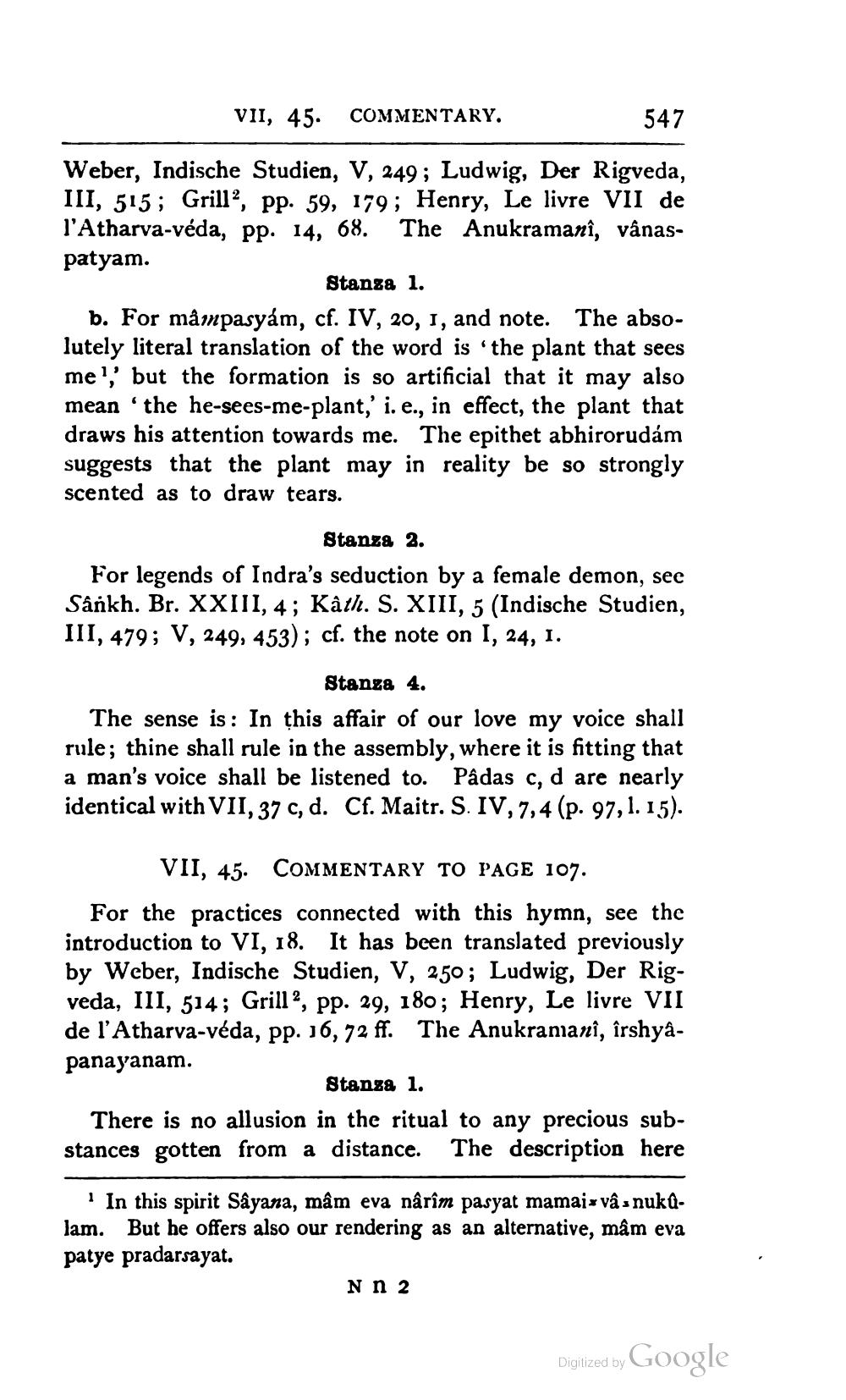________________
VII, 45. COMMENTARY.
547
Weber, Indische Studien, V, 249; Ludwig, Der Rigveda, III, 515; Grill?, pp. 59, 179; Henry, Le livre VII de l'Atharva-véda, pp. 14, 68. The Anukramani, vânaspatyam.
Stanga 1. b. For måmpasyám, cf. IV, 20, 1, and note. The absolutely literal translation of the word is the plant that sees me;' but the formation is so artificial that it may also mean 'the he-sees-me-plant,' i. e., in effect, the plant that draws his attention towards me. The epithet abhirorudám suggests that the plant may in reality be so strongly scented as to draw tears.
Stanza 2. For legends of Indra's seduction by a female demon, see Sankh. Br. XXIII, 4; Kath. S. XIII, 5 (Indische Studien, III, 479; V, 249, 453); cf. the note on I, 24, 1.
Stanza 4.
The sense is: In this affair of our love my voice shall rule; thine shall rule in the assembly, where it is fitting that a man's voice shall be listened to. Pâdas c, d are nearly identical with VII, 37 c, d. Cf. Maitr. S. IV, 7,4 (p. 97, 1. 15).
VII, 45. COMMENTARY TO PAGE 107. For the practices connected with this hymn, see the introduction to VI, 18. It has been translated previously by Weber, Indische Studien, V, 250; Ludwig, Der Rigveda, III, 514; Grill?, pp. 29, 180; Henry, Le livre VII de l'Atharva-véda, pp. 16, 72 ff. The Anukrananî, îrshyapanayanam.
Stanza 1. There is no allusion in the ritual to any precious substances gotten from a distance. The description here
In this spirit Sâyana, mâm eva nârîm pasyat mamais vâs nukalam. But he offers also our rendering as an alternative, mâm eva patye pradarsayat.
Nn 2
Digized by Google




